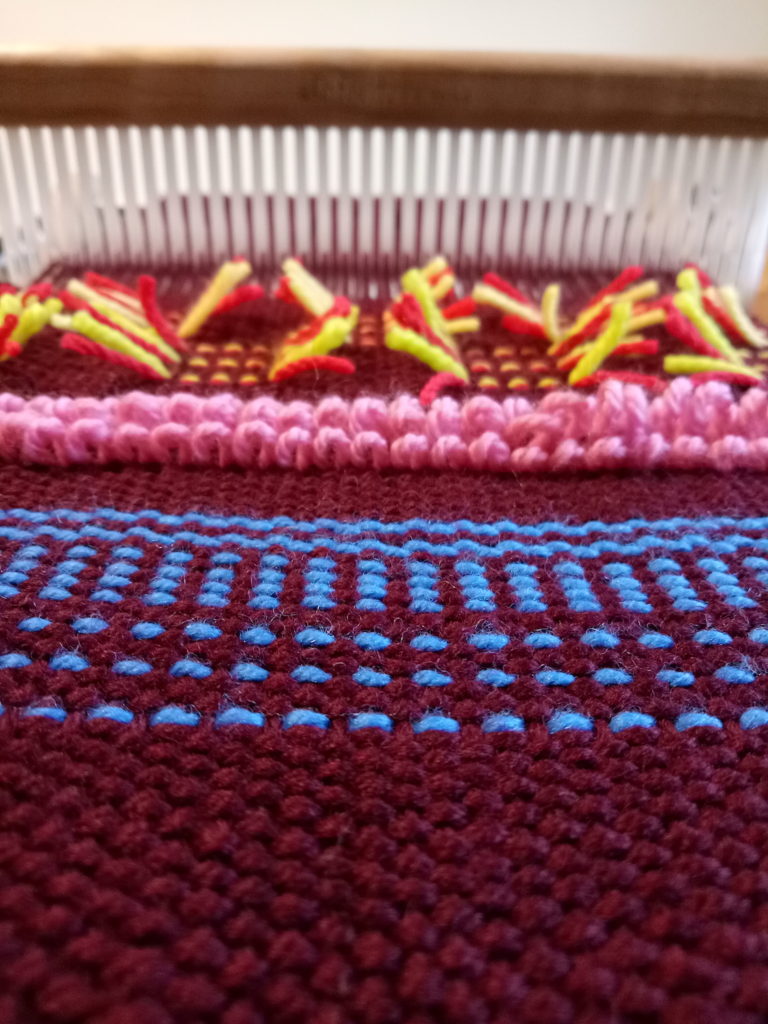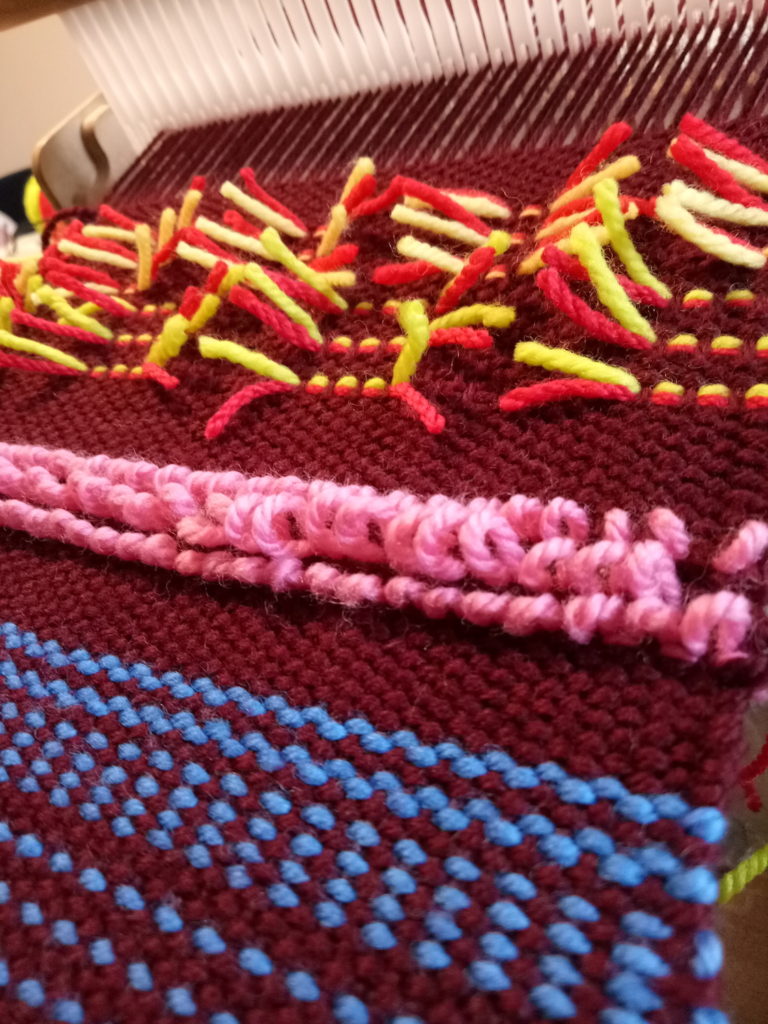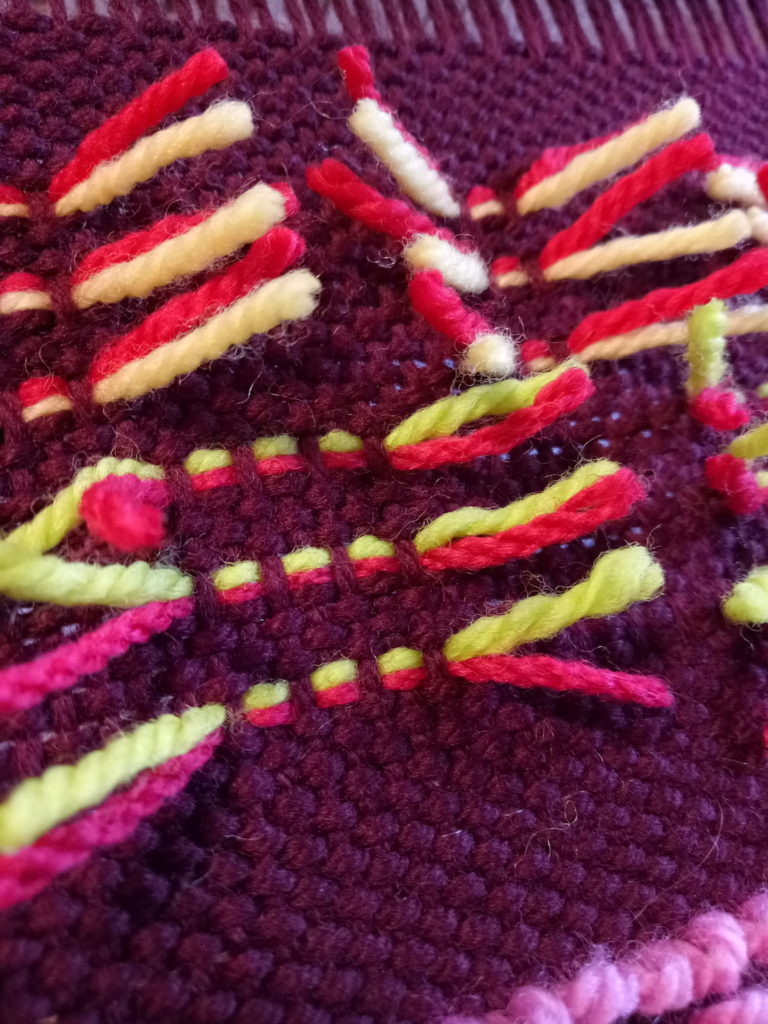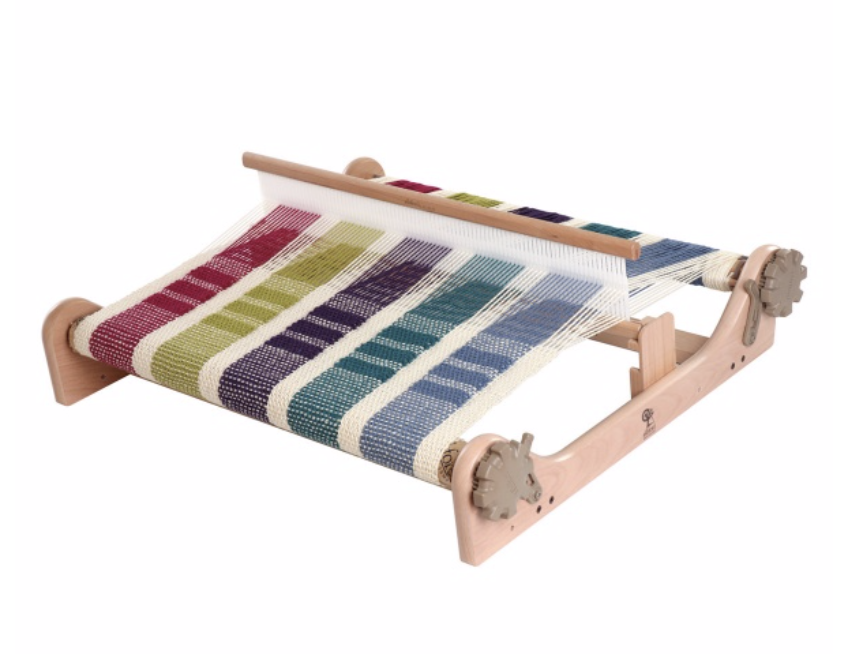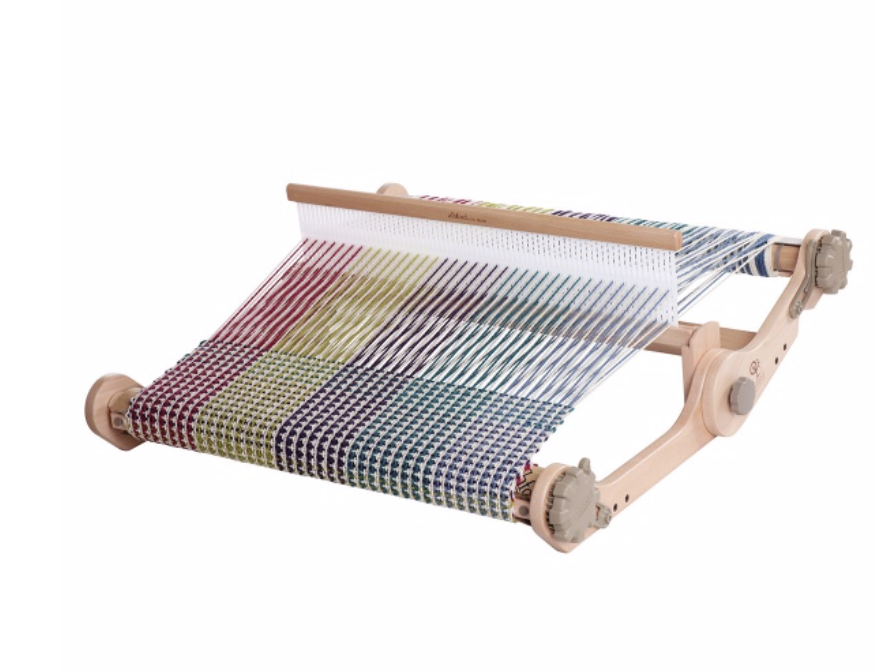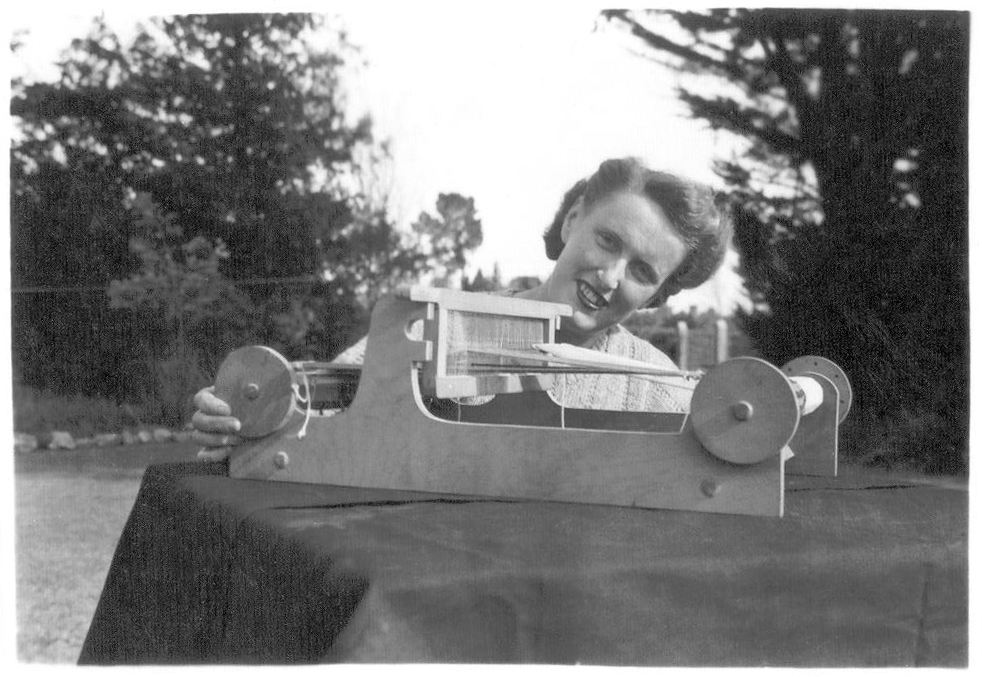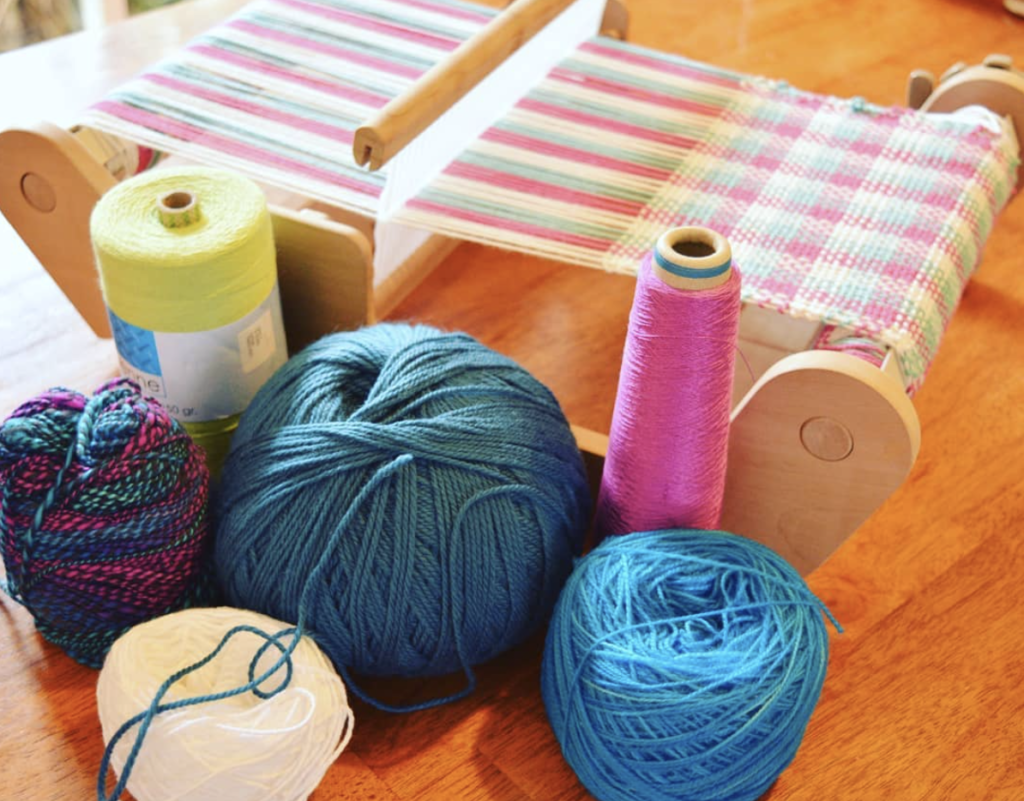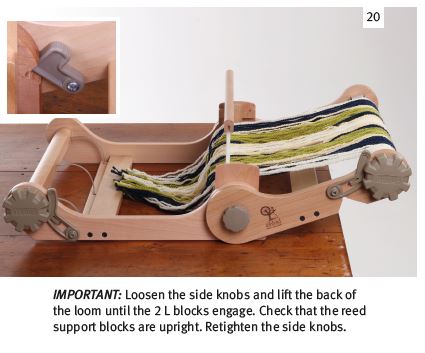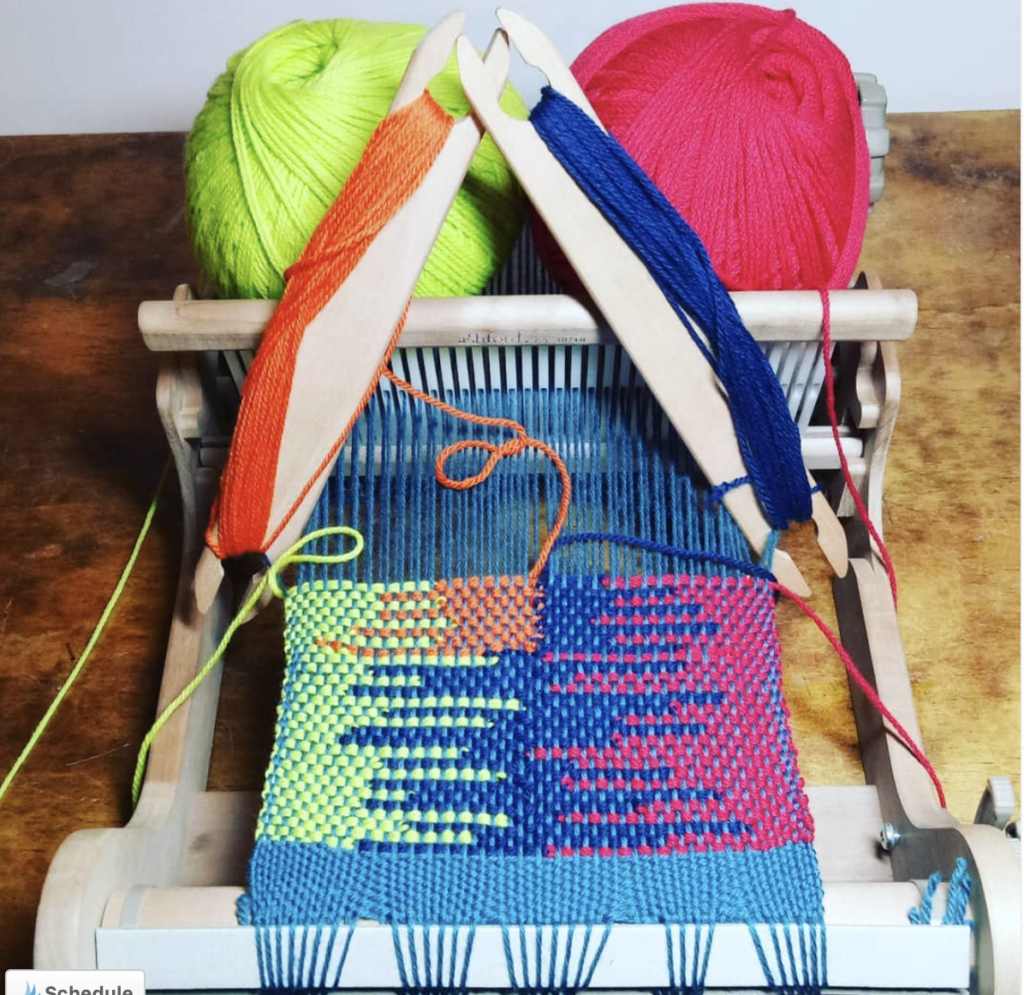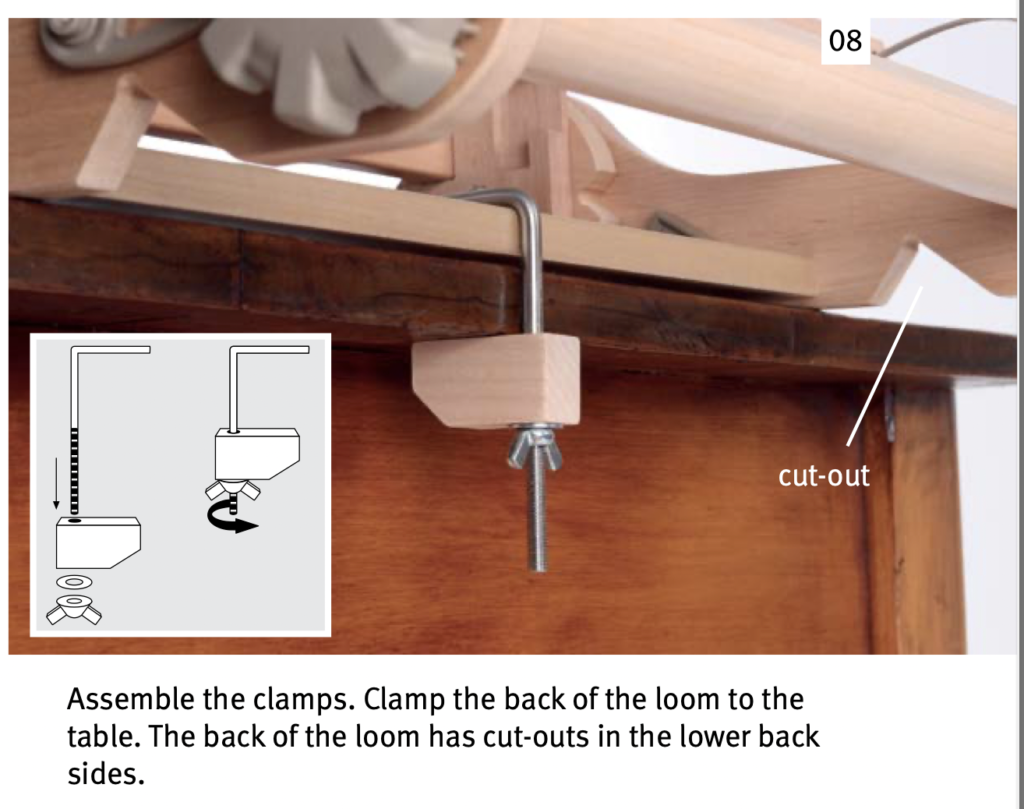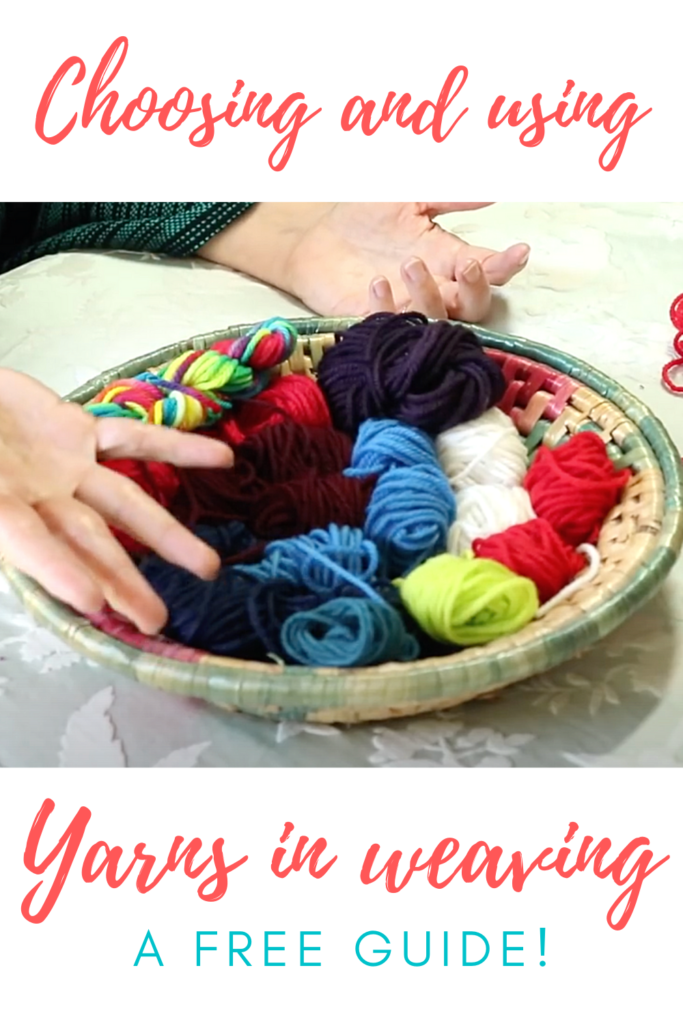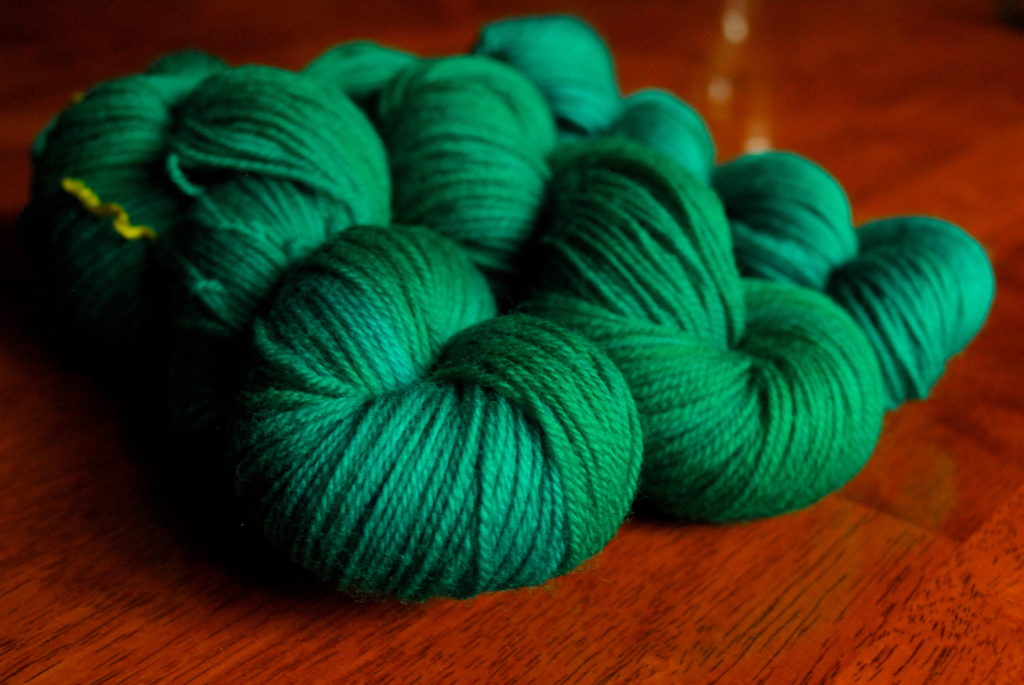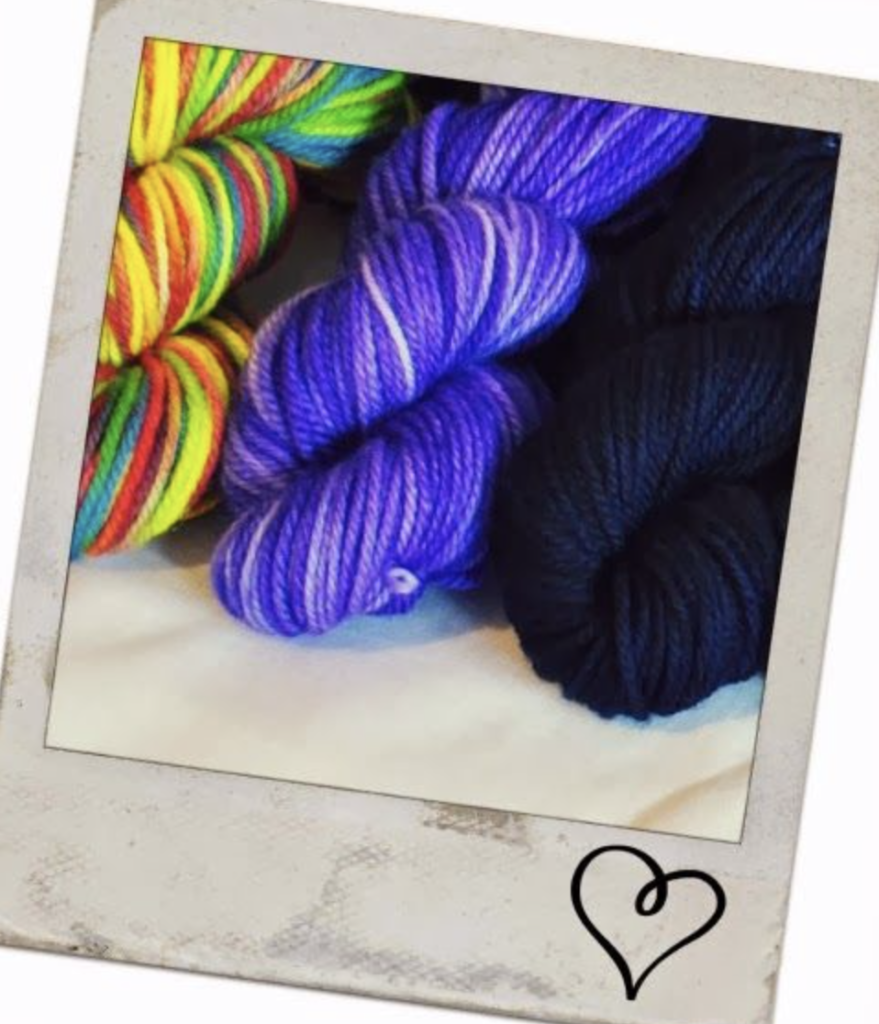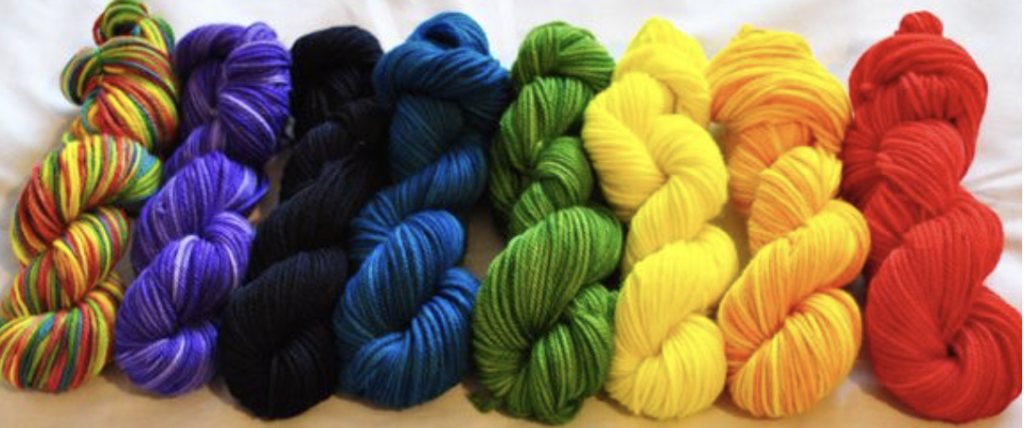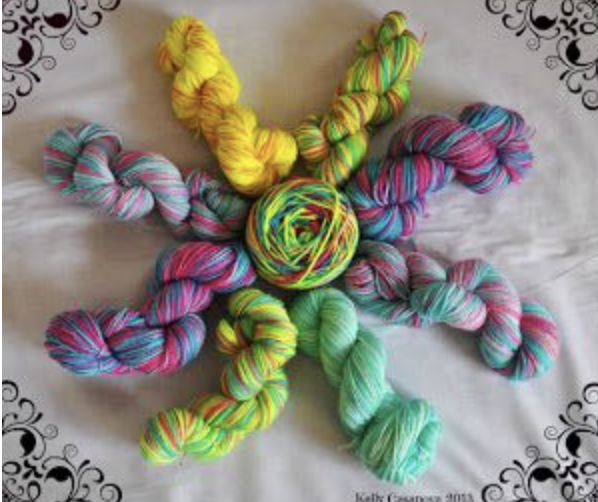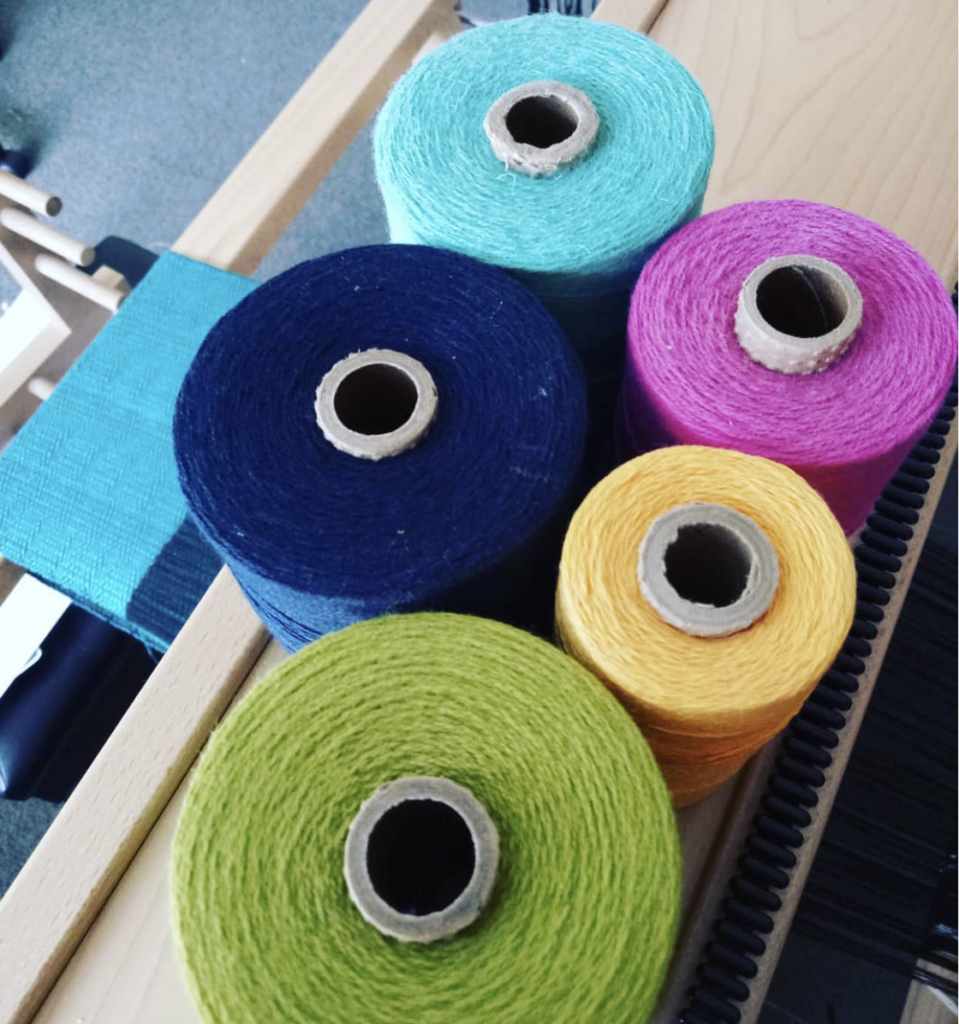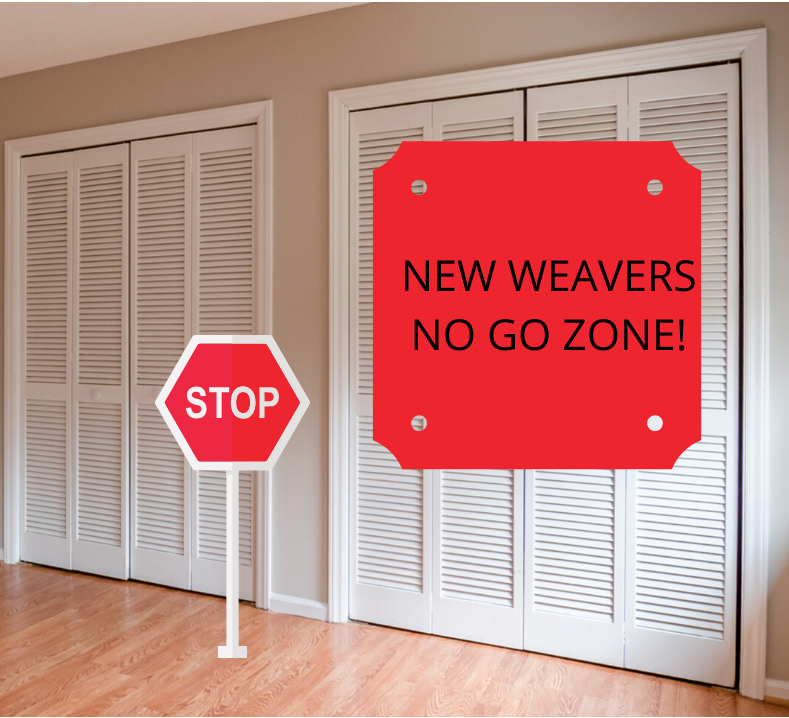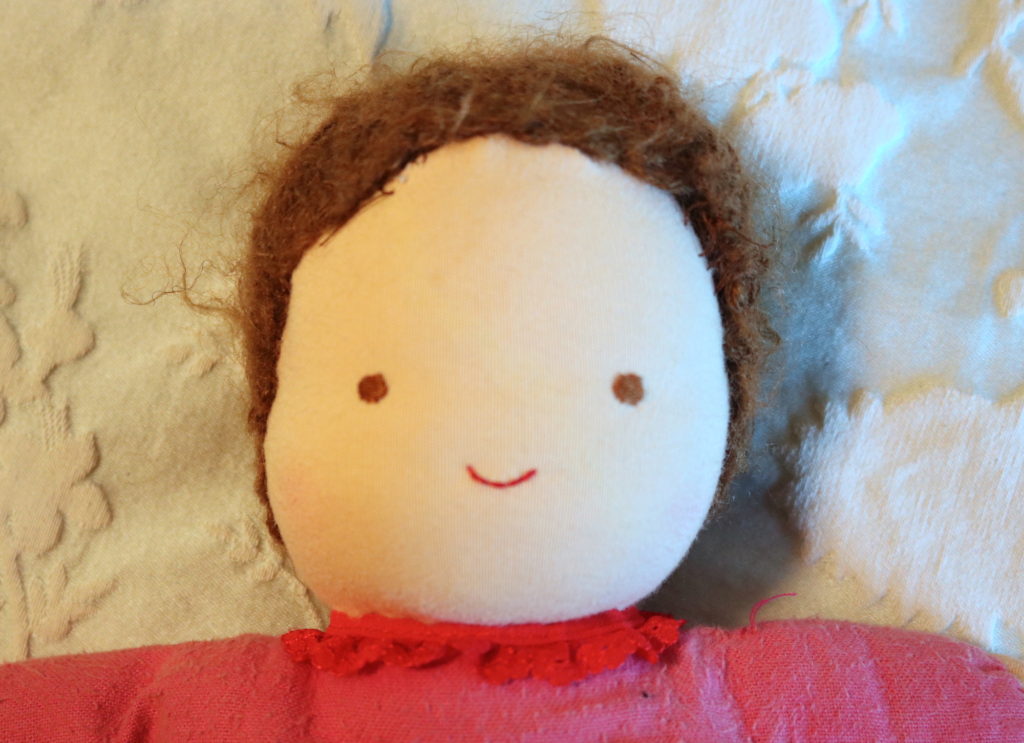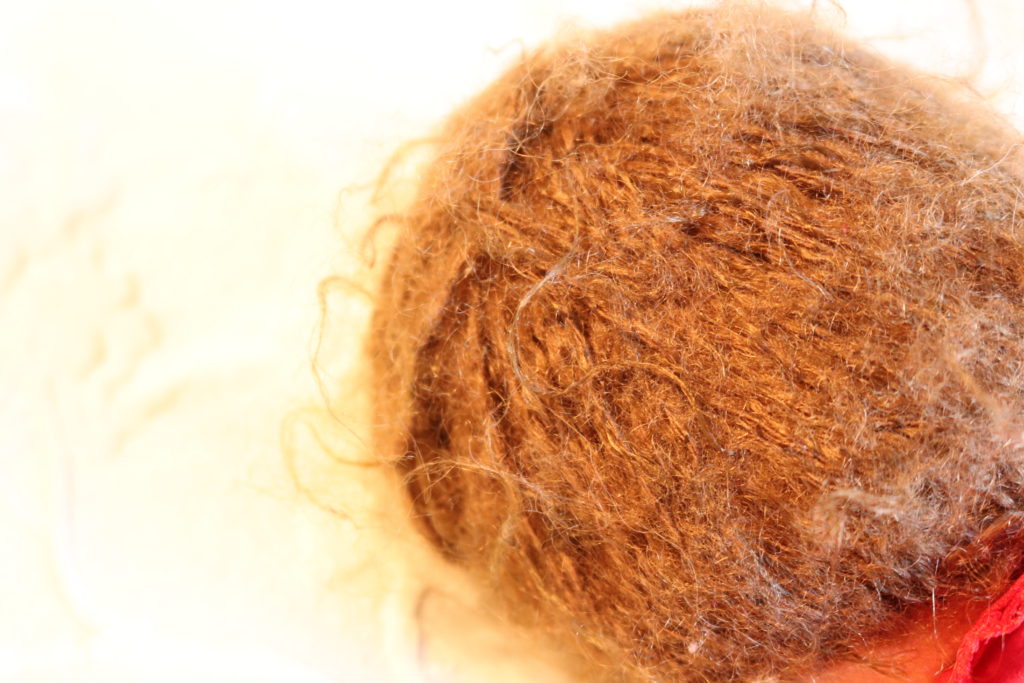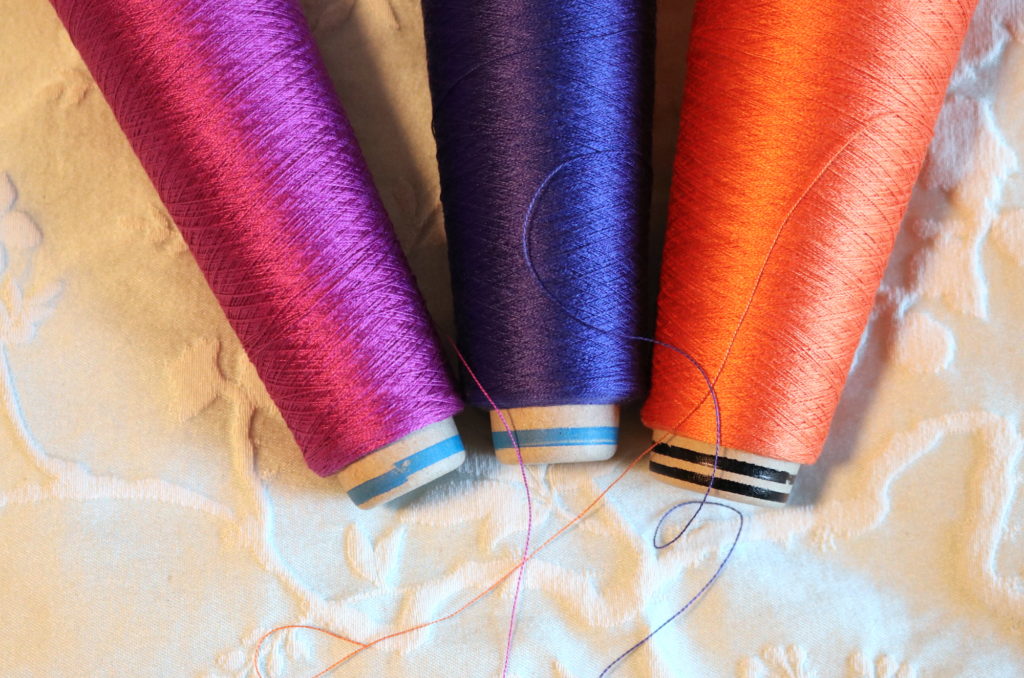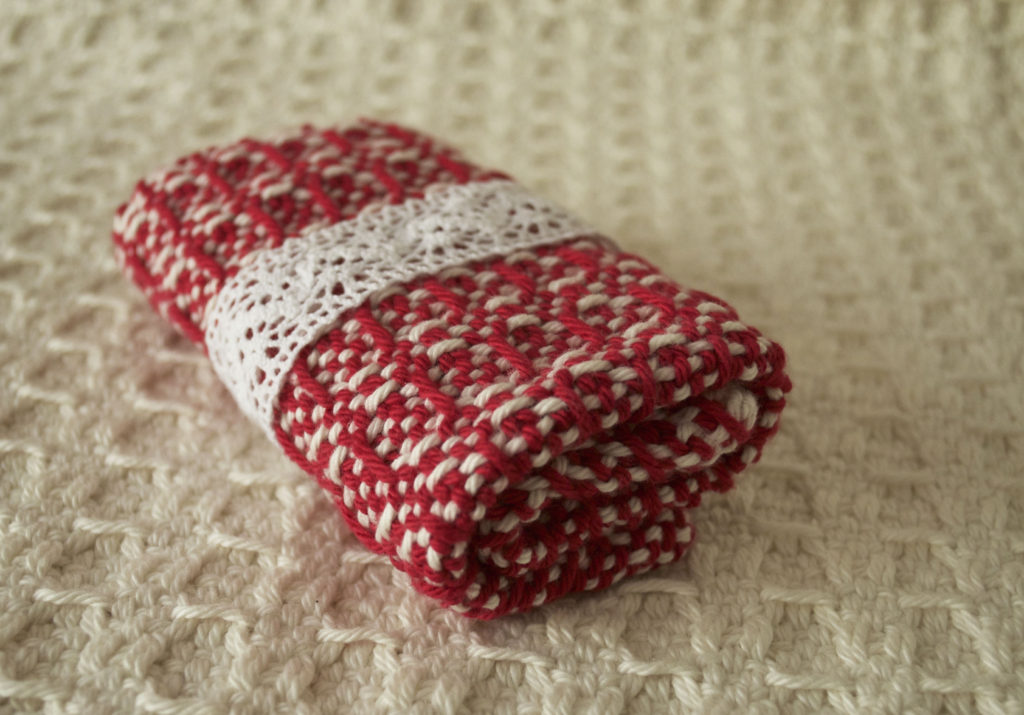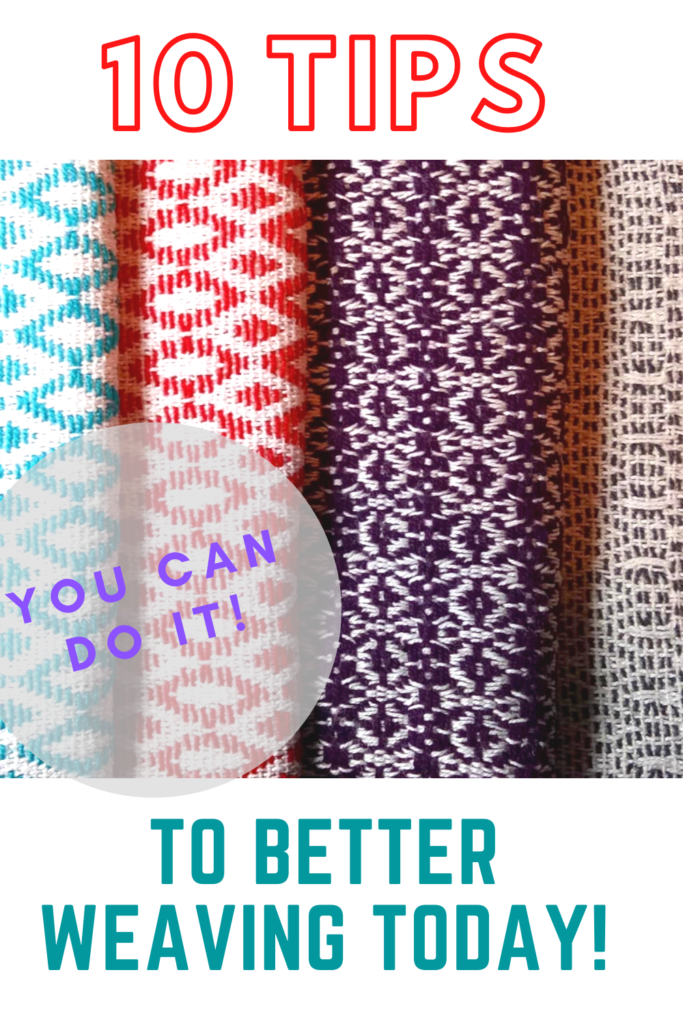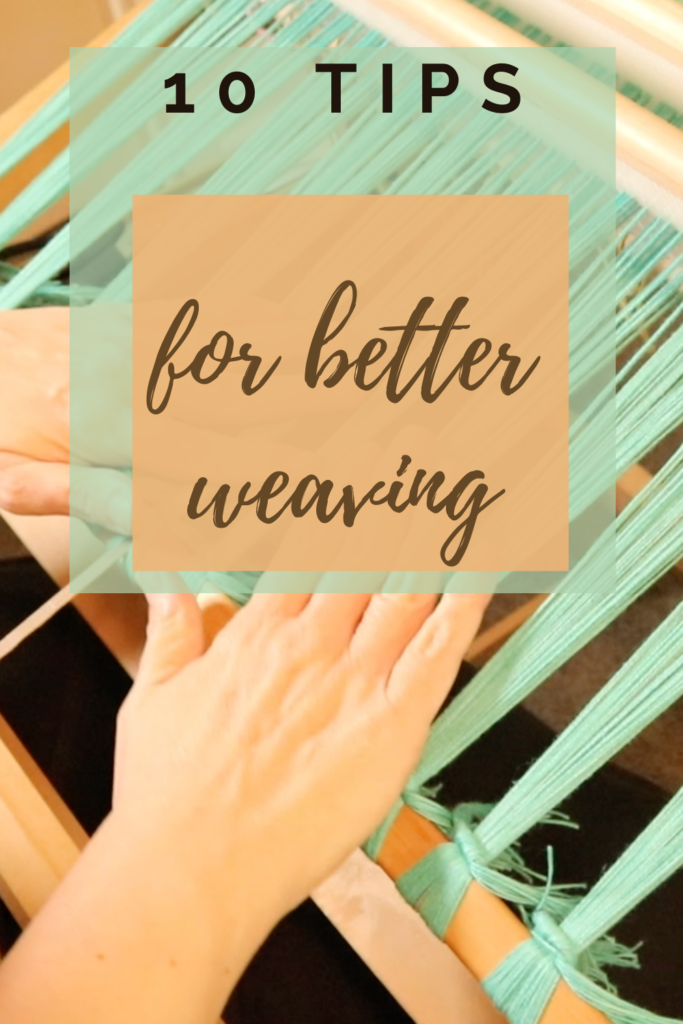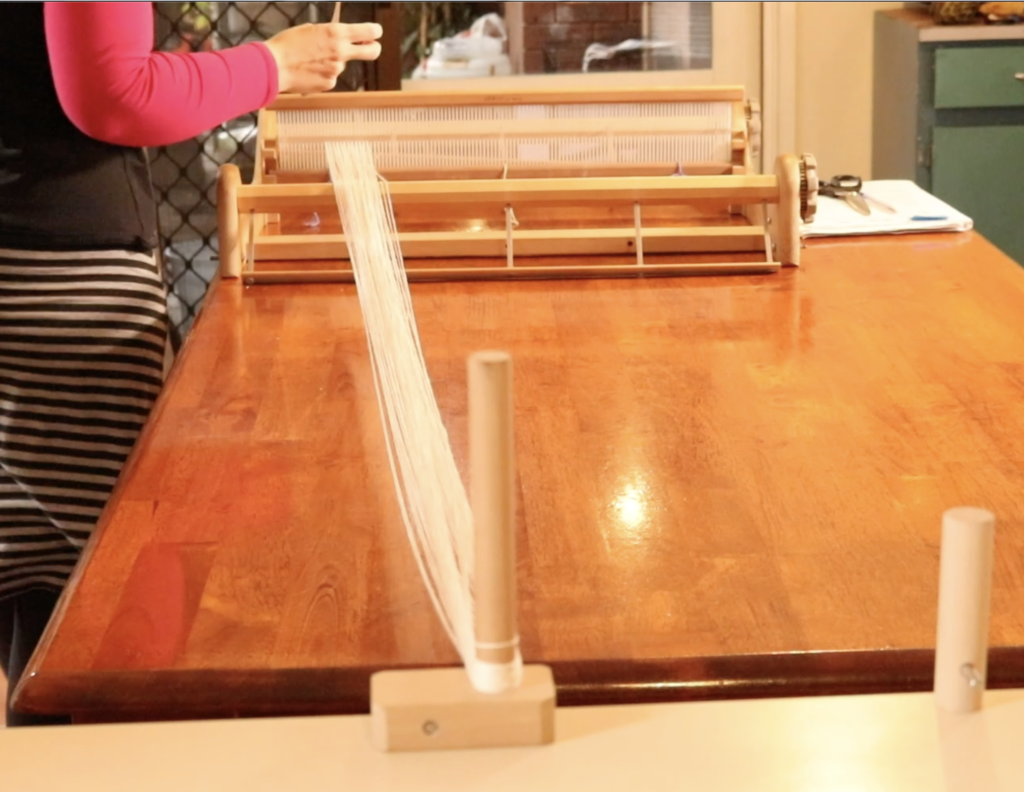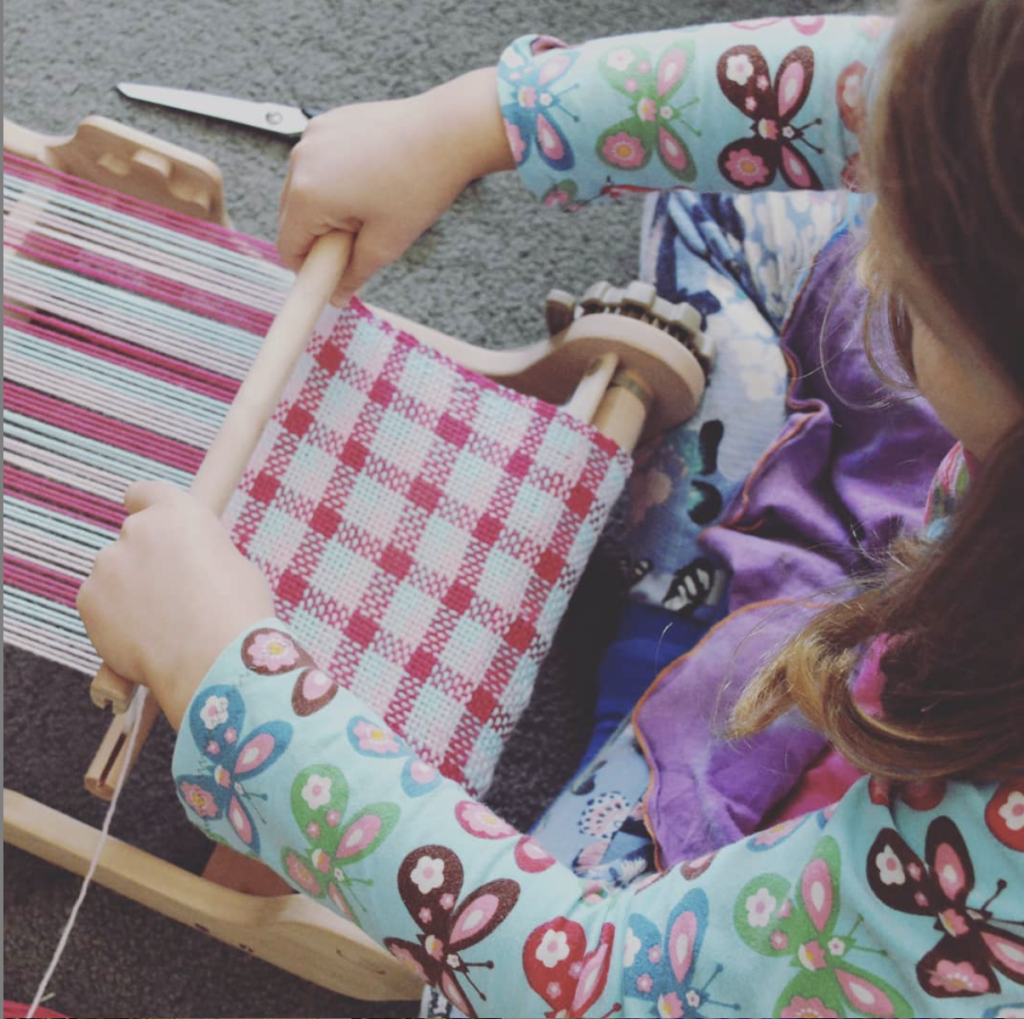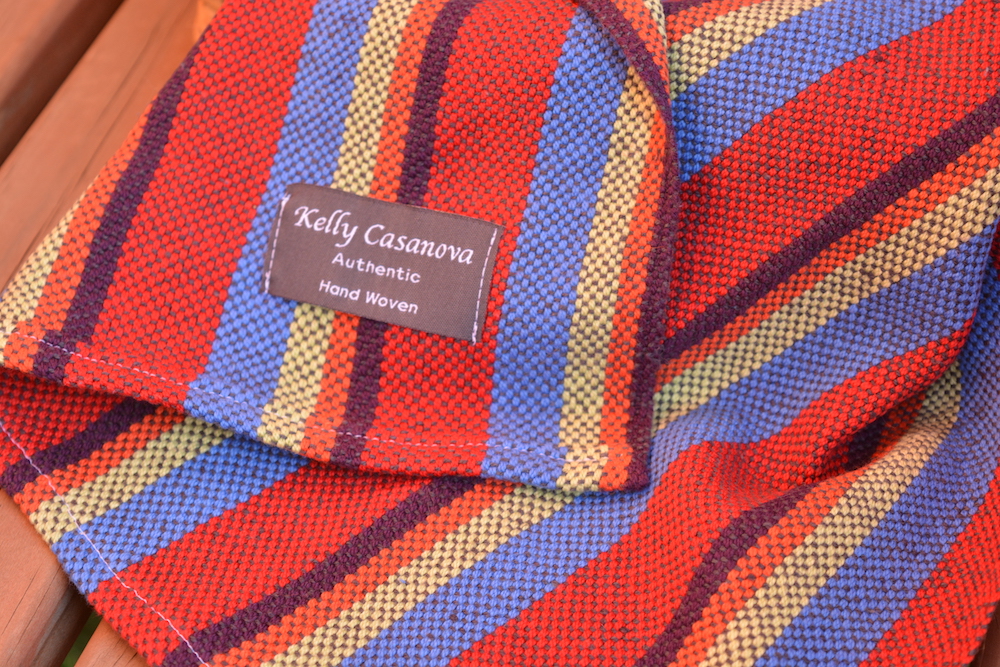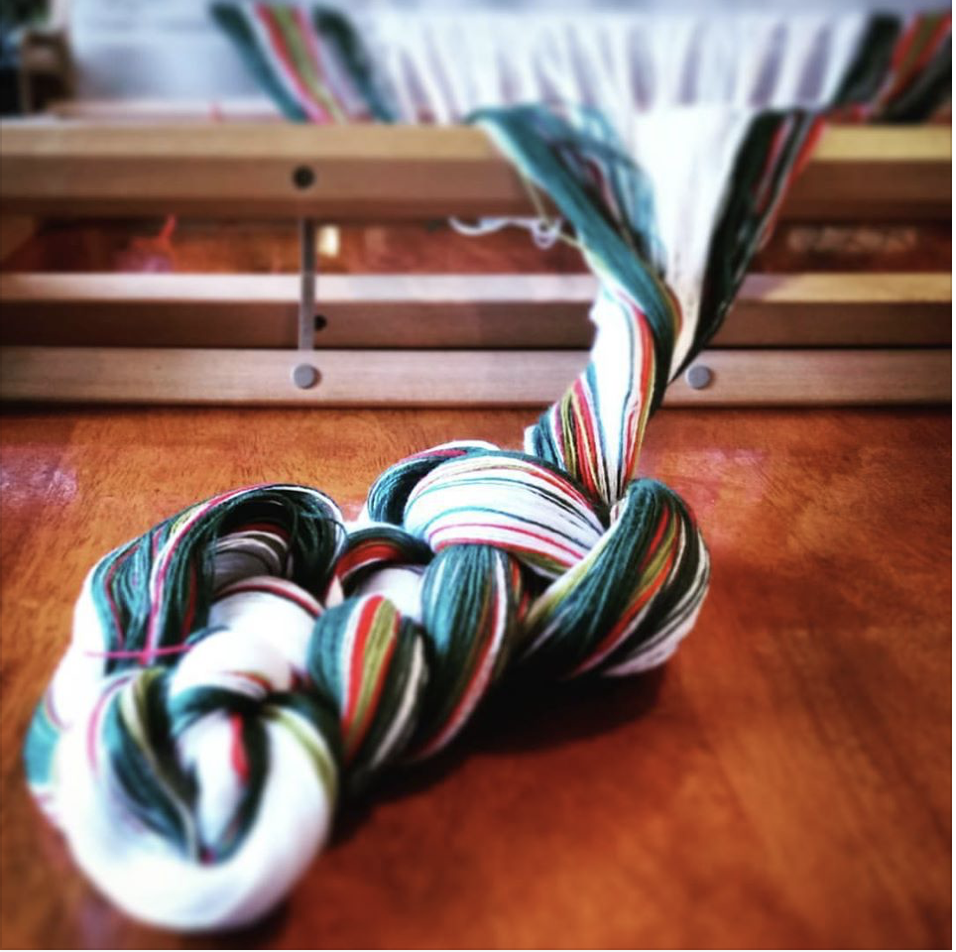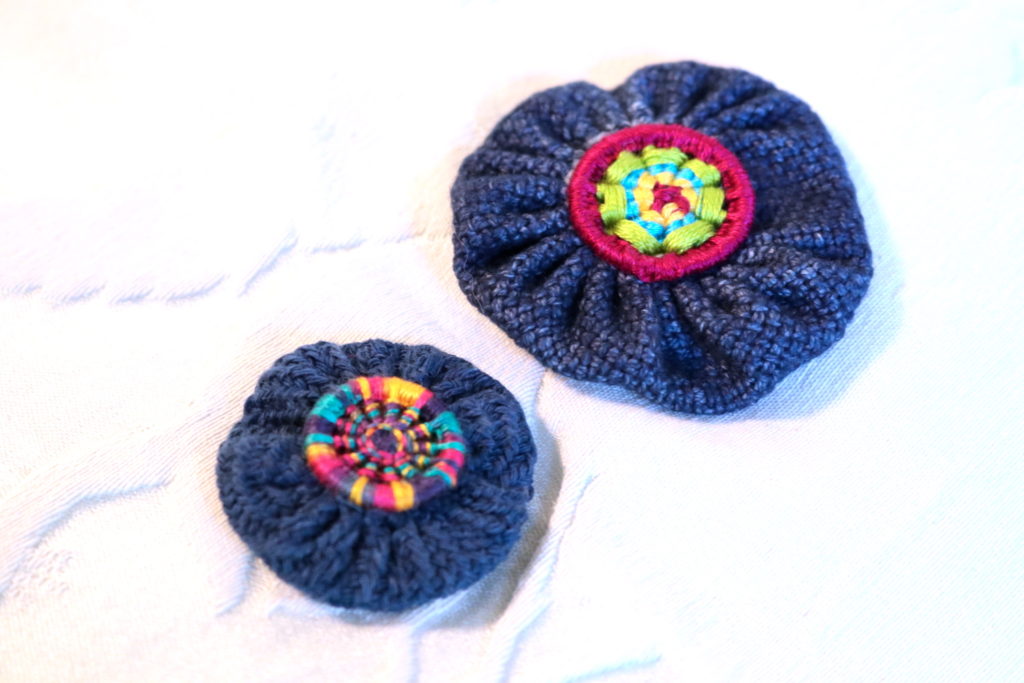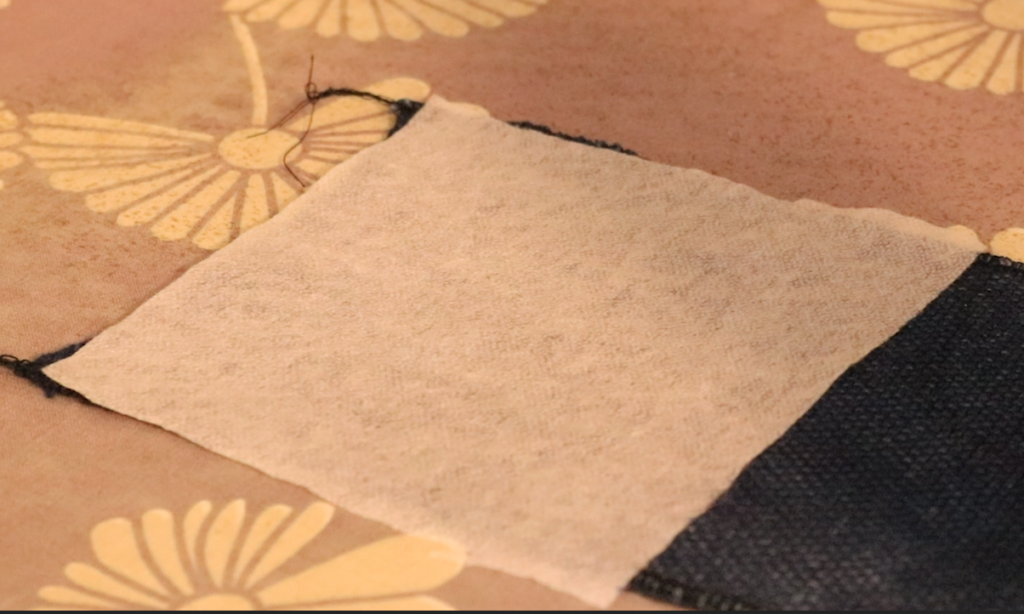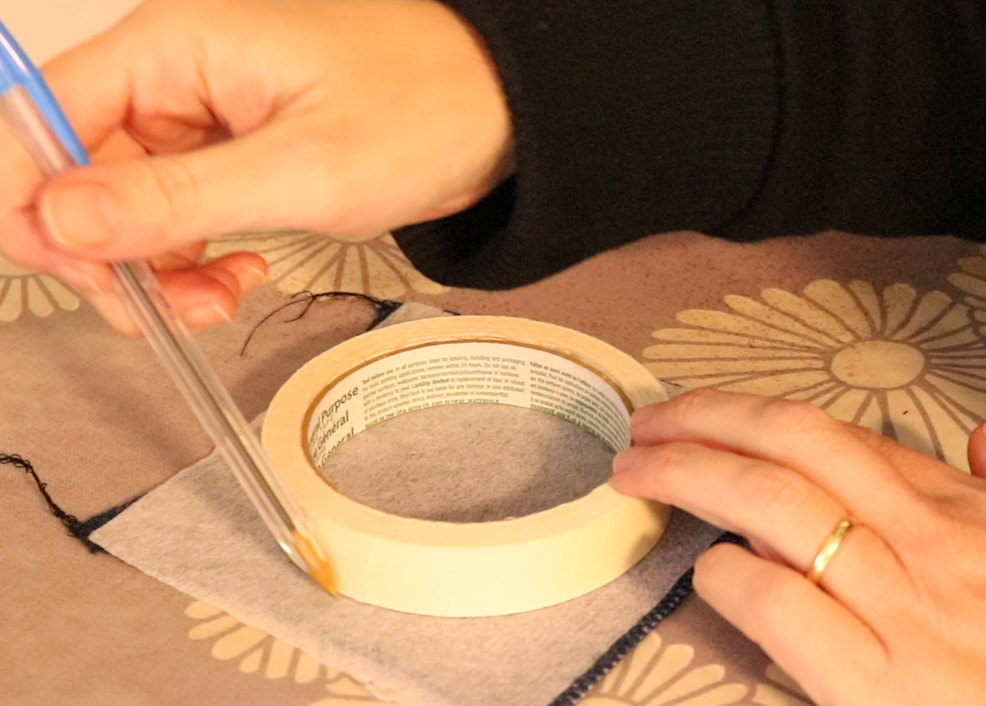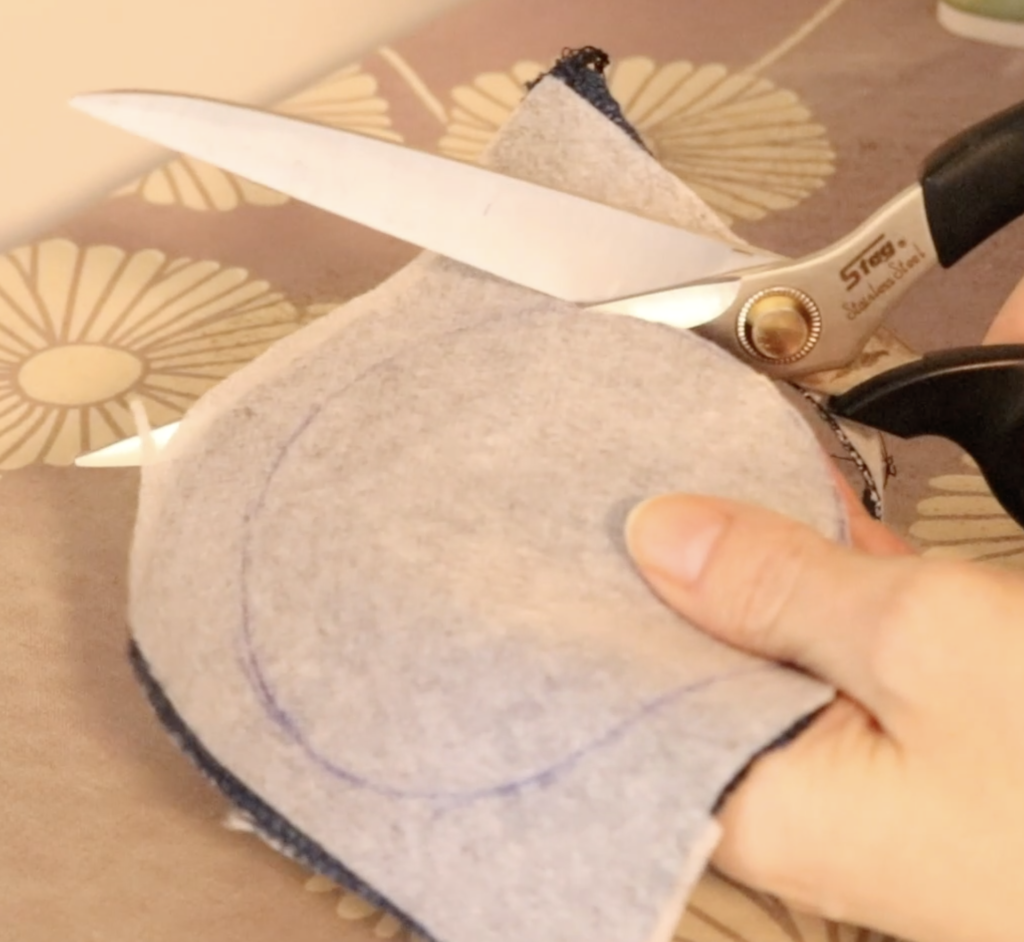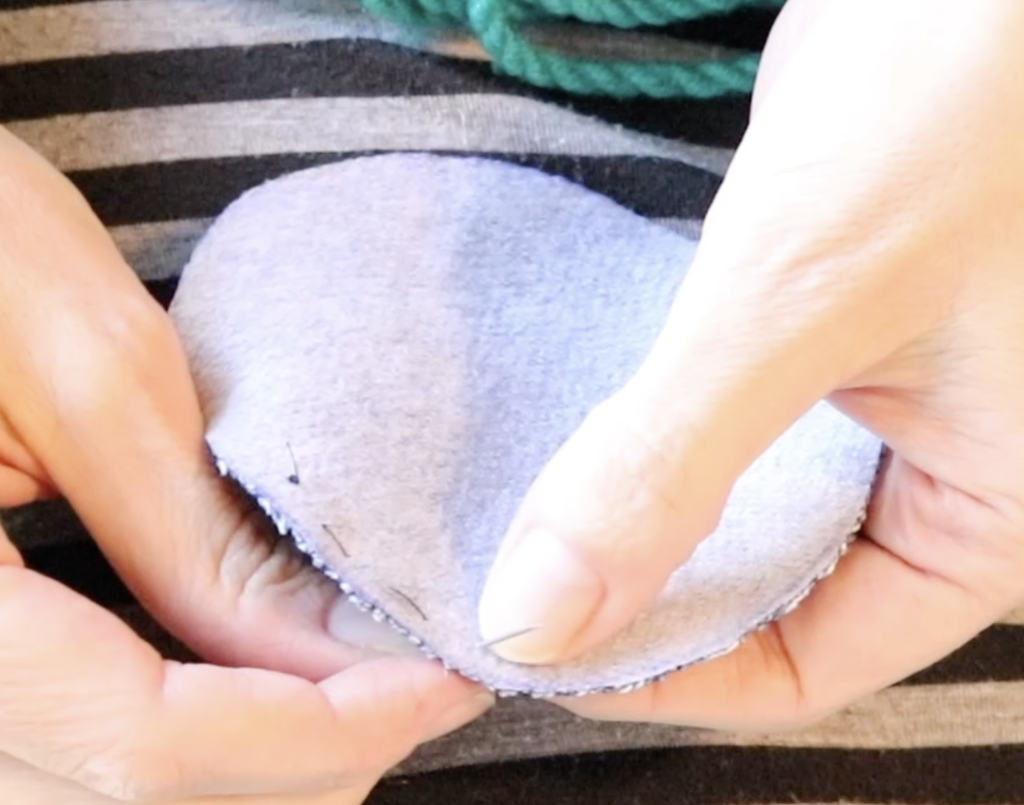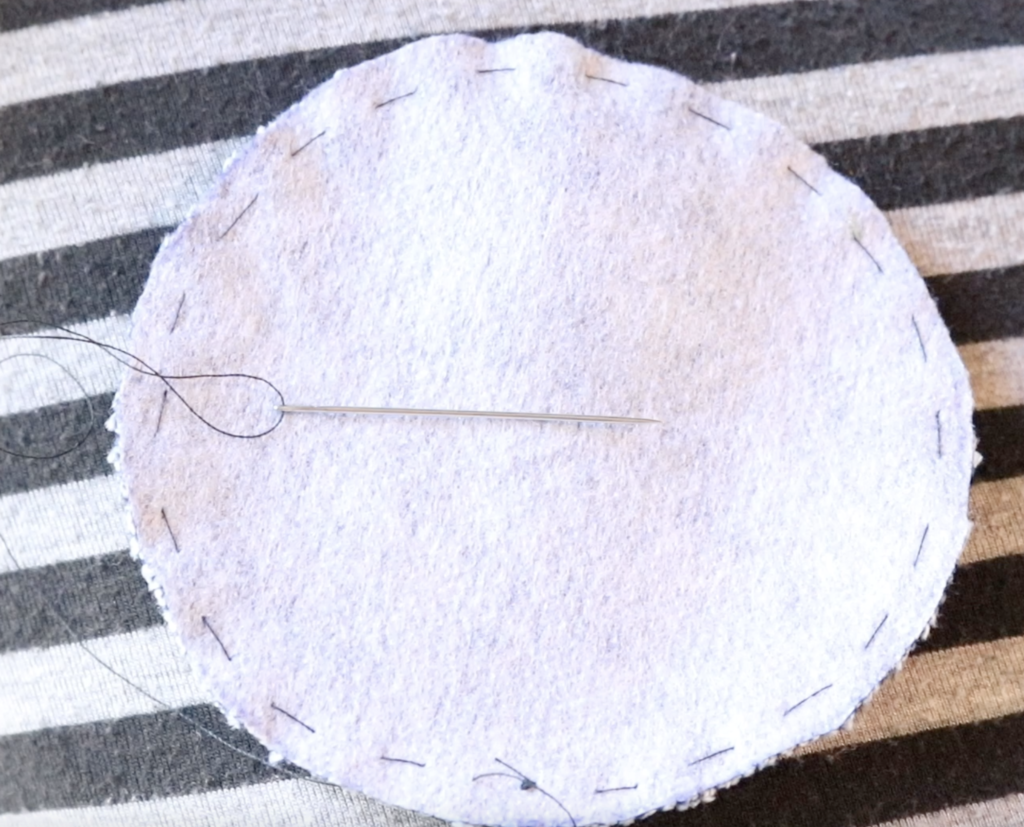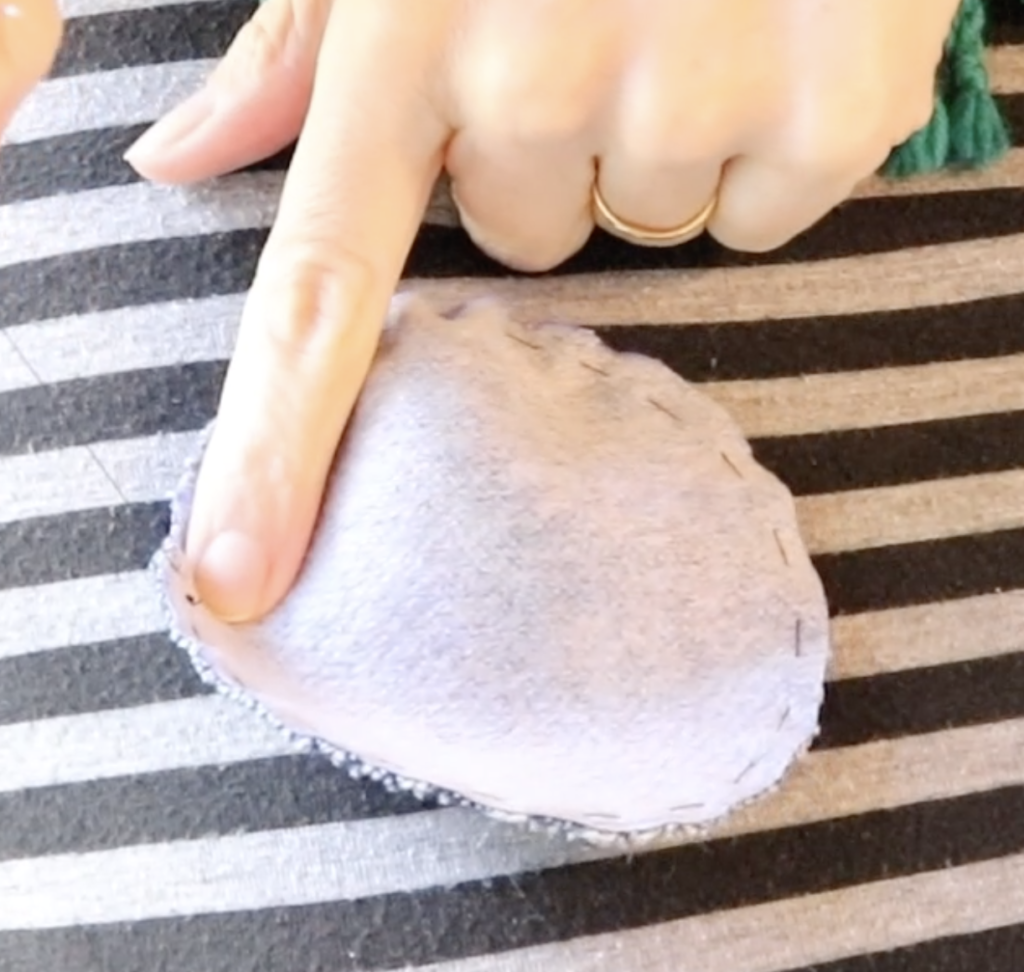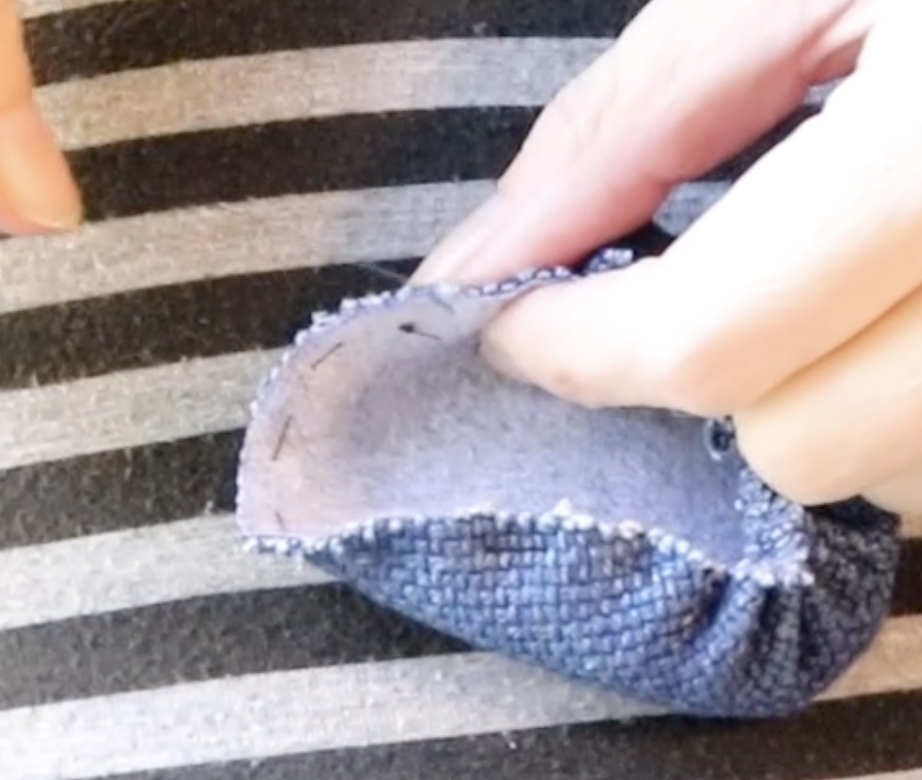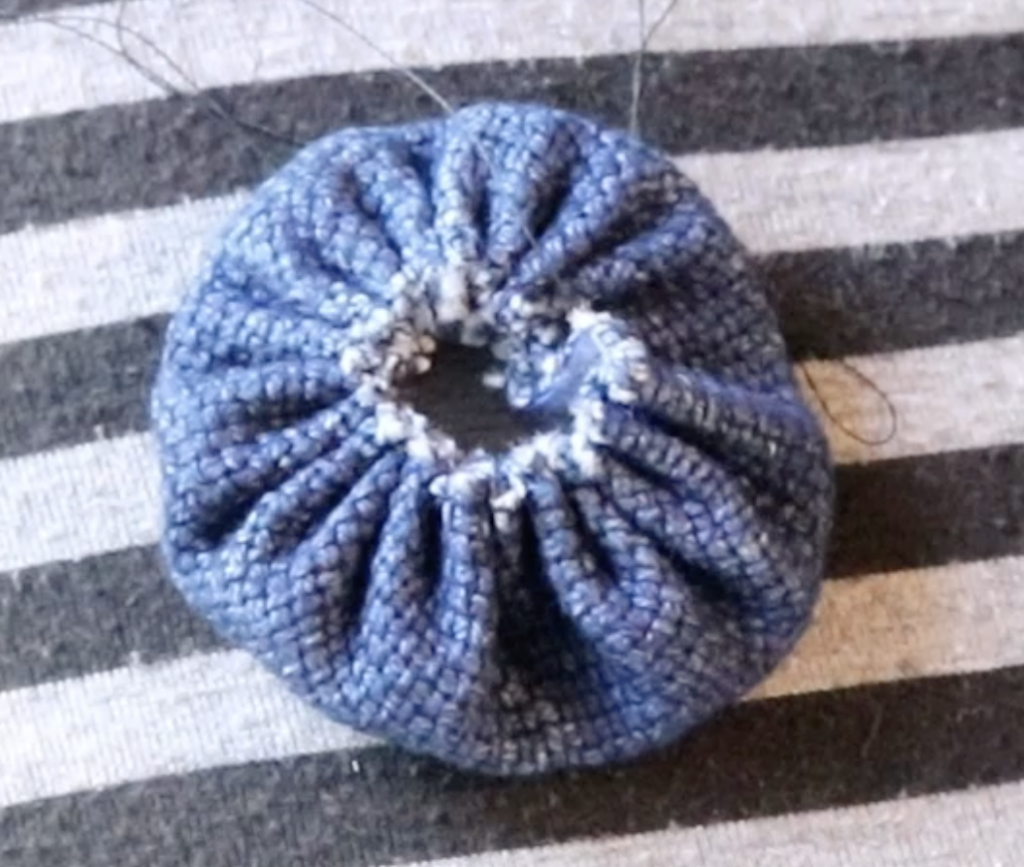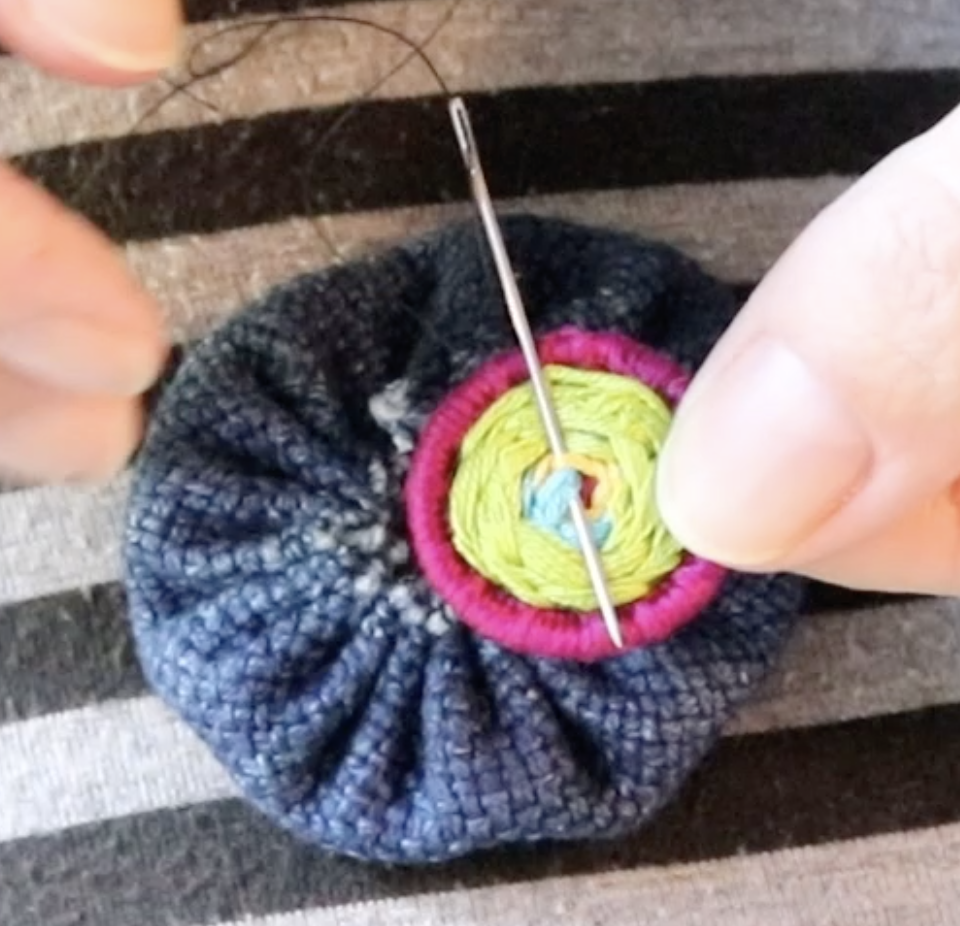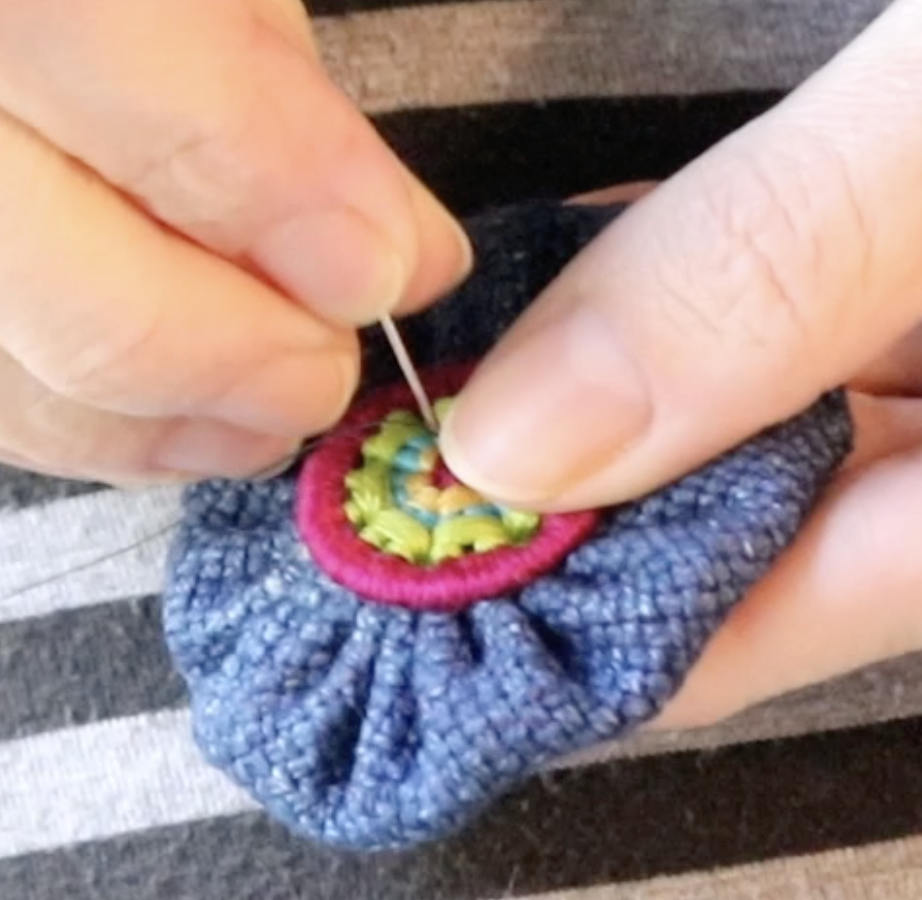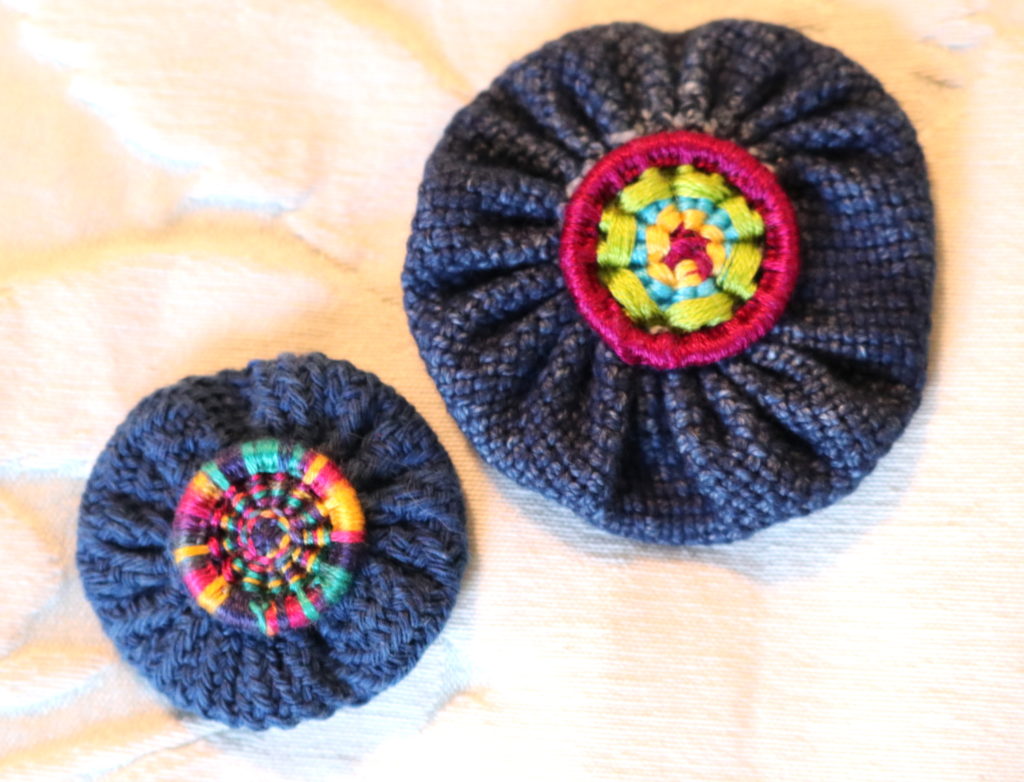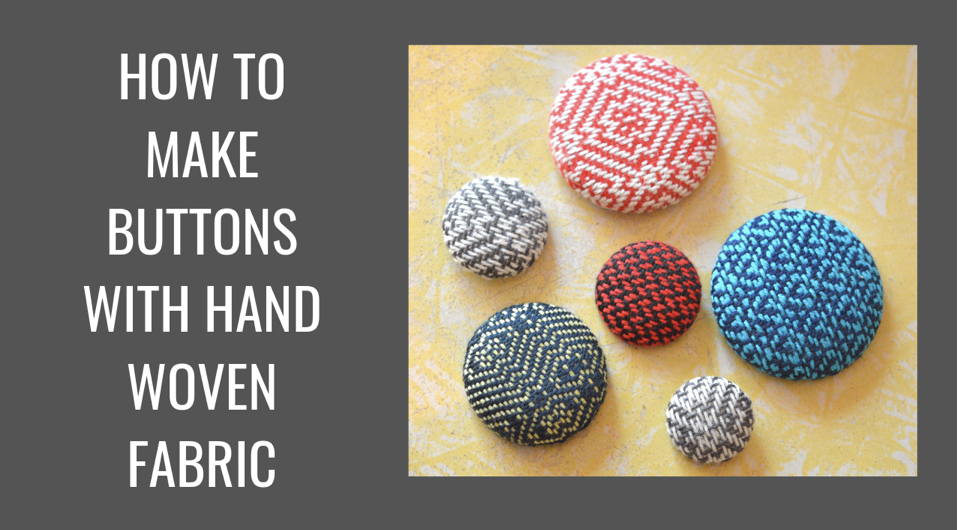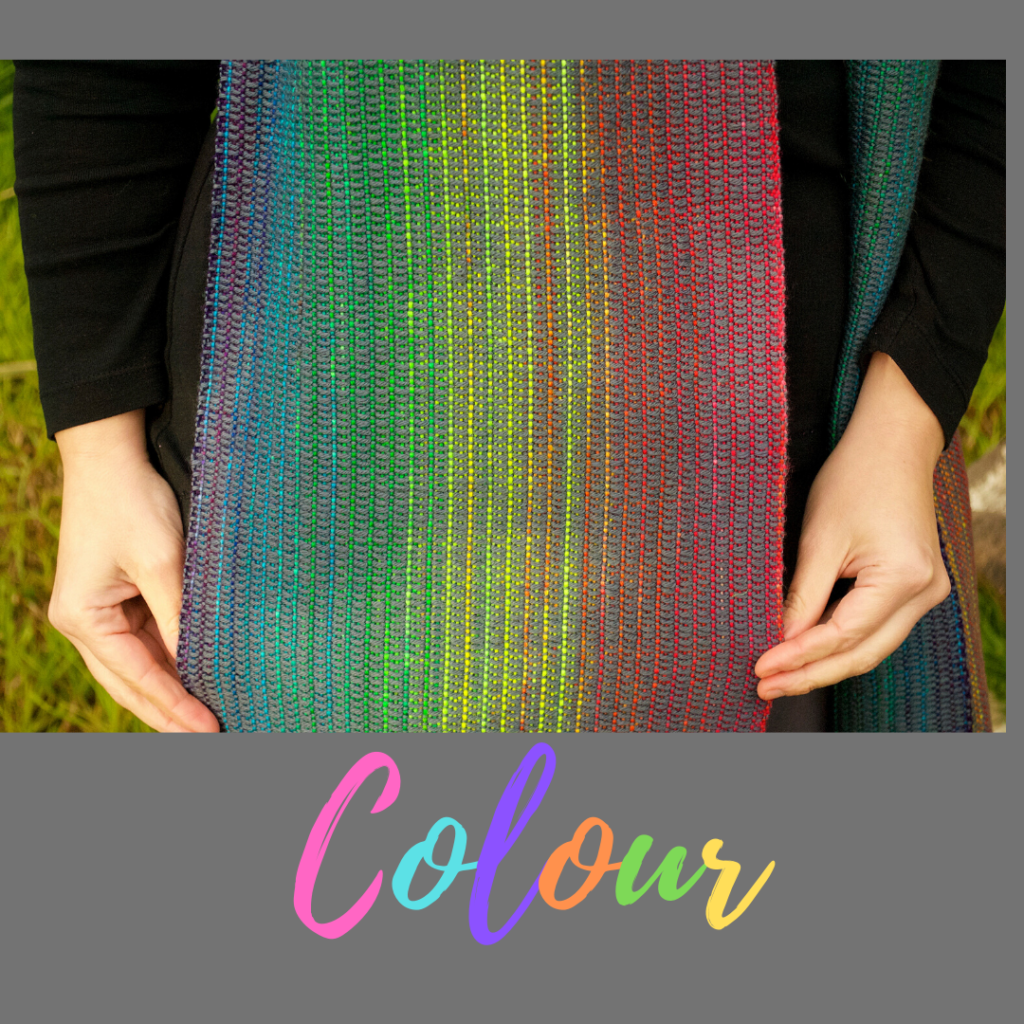Making patterns on your rigid heddle loom is a very popular topic, particularly among newer weavers who are experimenting to see just what they can achieve on a rigid heddle loom.
*This post contains affiliate links. Please see my disclosure for further information.
Last week I made a tutorial that demonstrated 3 ways to jazz up your plain weave.
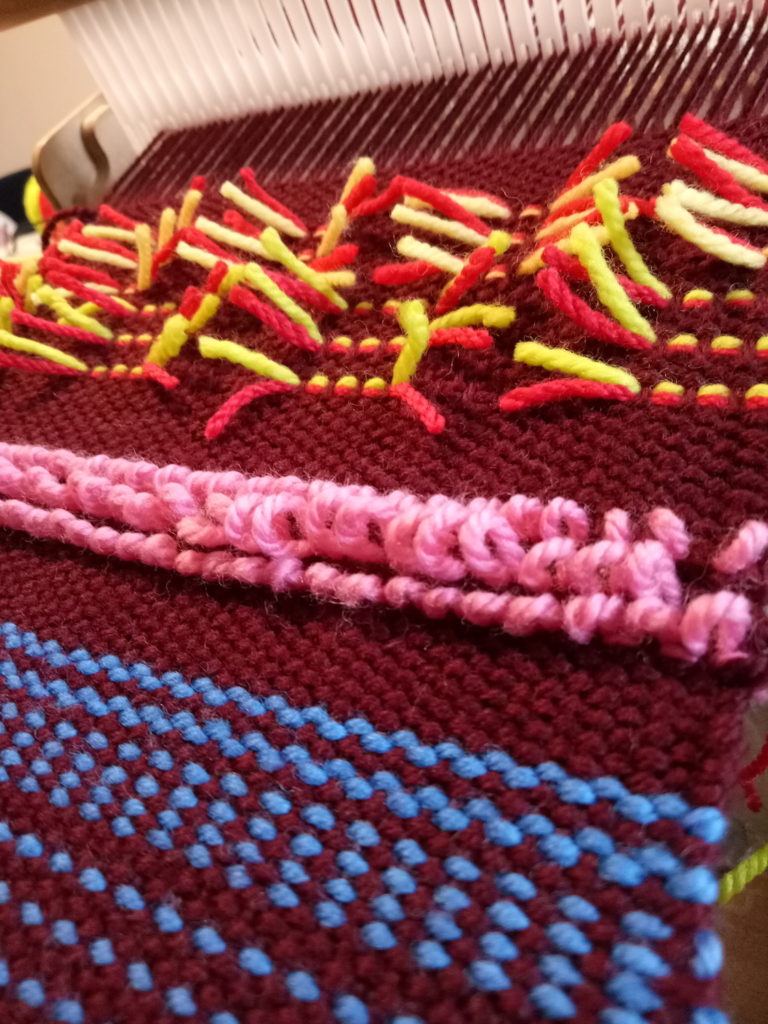
This is part two of a tutorial on how to jazz up your plain weave. Part one showed you how to use stripes, dots and dashes, loop pile and butterflies to add some extra pizazz. If you missed part one, please start here and progress on to tutorial two afterwards.
You will need a rigid heddle loom to weave this sampler. In the video, you can see that I’ve used my Sampleit loom.
This downloadable PDF has all the information you need to follow this tutorial in conjunction with the video:
For instructions to part one of the tutorial, don’t forget to check out the first article here.
There are so many simple ways to push past plain weave. As I was weaving the sampler I found it hard to limit the number of techniques so that I didn’t end up making this series a year long!
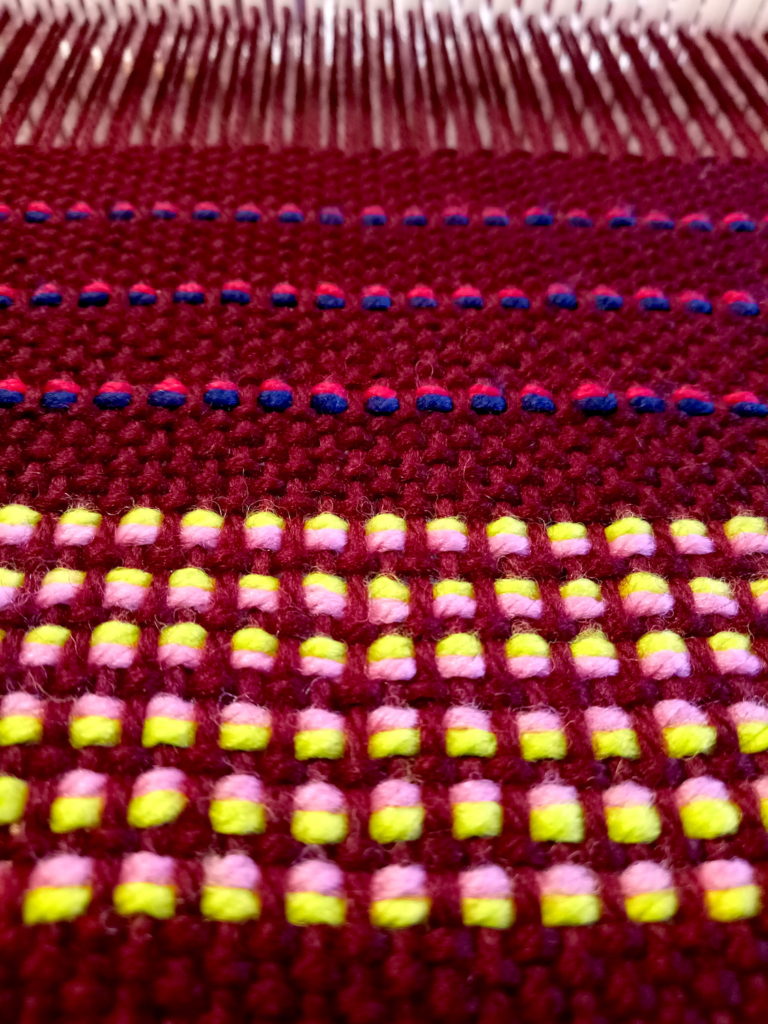
Part two of the tutorial covers and additional 3 techniques that you can use to make your plain weave more exciting or just for fun to explore.
All of these pattern techniques can be worked on a rigid heddle loom that is already set up for plain weave – that is, every hole and slot is threaded.
- Doubled Weft (pictured above).
The first technique is straightforward and simple but gives a very cool effect that really pops against the background, contrast colour.
2. Pick Up Rows (the blue blocks below)
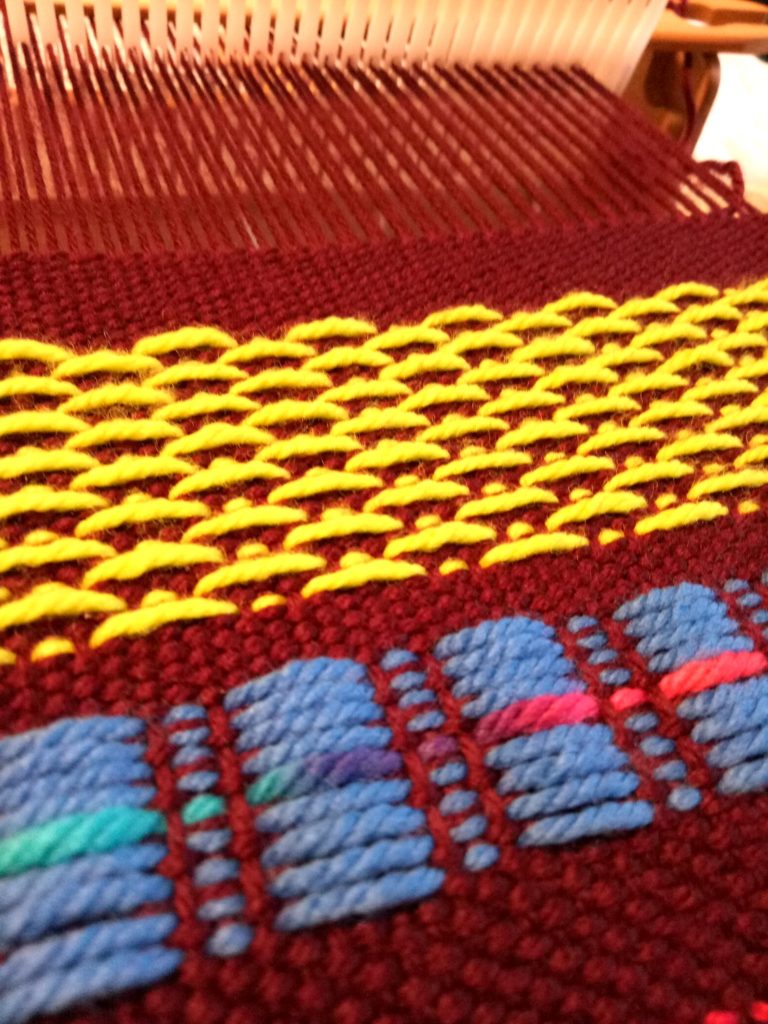
This is such a simple concept. I made a pick up pattern and repeated it over and over (with the blue yarn) and only one pick of plain weave (maroon) in between). What you end up with is towers and dots. I had a very small amount of hand dyed rainbow yarn left, so I threw in just one pick in the middle of all the blue, to break it up and create more interest.
3. Staggered Pick Up (the bright green that actually looks like yellow, pictured above).
This is a 2 pick up stick pattern. In the video, I used just one stick and took it out each time I wanted to pick up the other pattern. But, I wouldn’t recommend that unless you’re only weaving a couple of rows, it’s way too tedious. If you want to weave a larger amount of the staggered pickup, a heddle rod is definitely the way to go! Check out this video for how to do that:
And of course, don’t forget to watch video two so that you can see exactly how I worked these techniques:
If you enjoyed this two part series, you will love my Online Weaving School! With over 60 classes currently available, there really is something for everyone. I would love to see you there!
Until next time…
Happy weaving!

